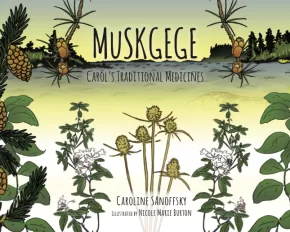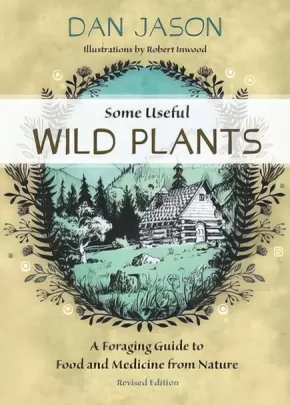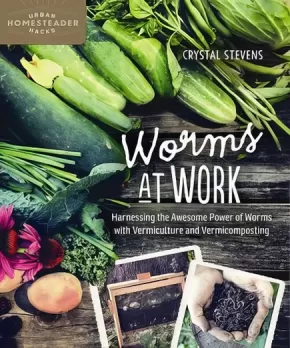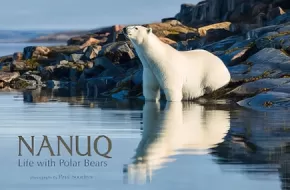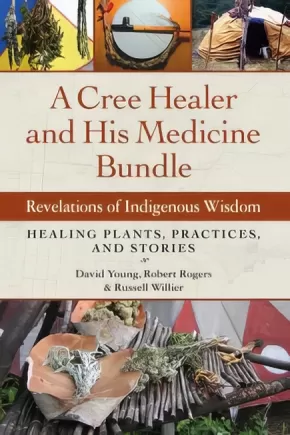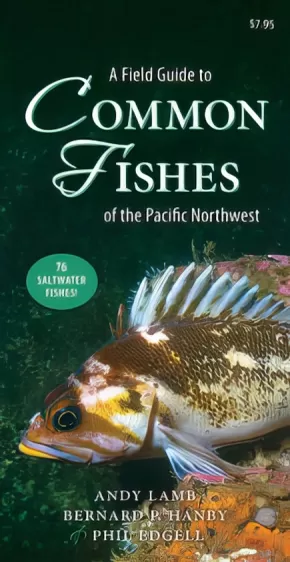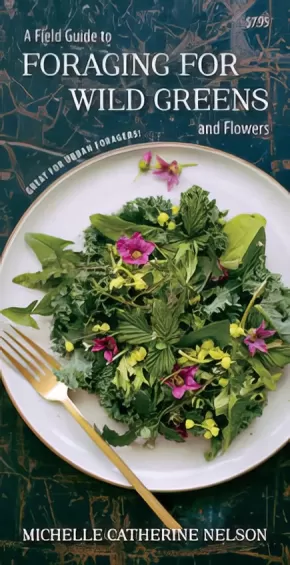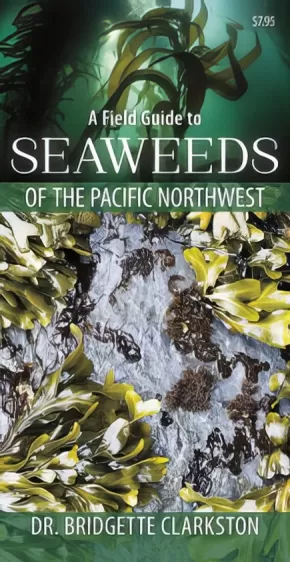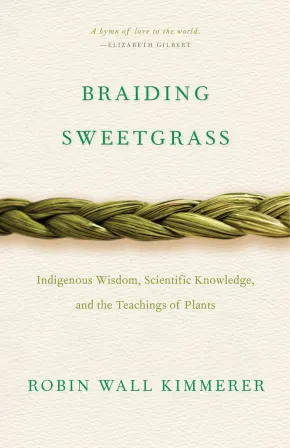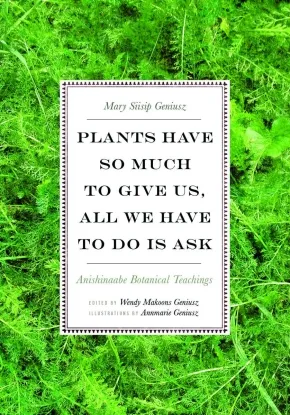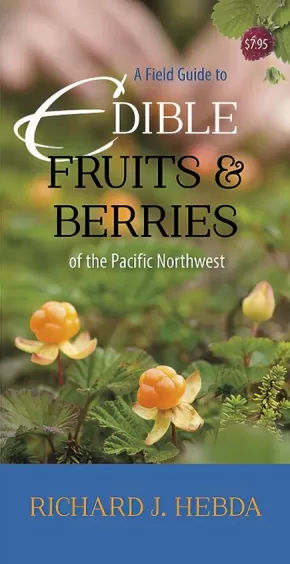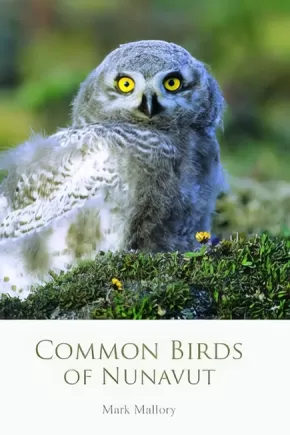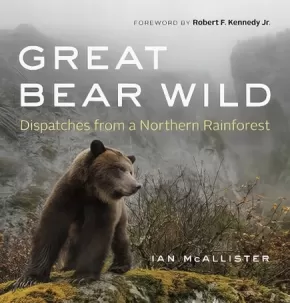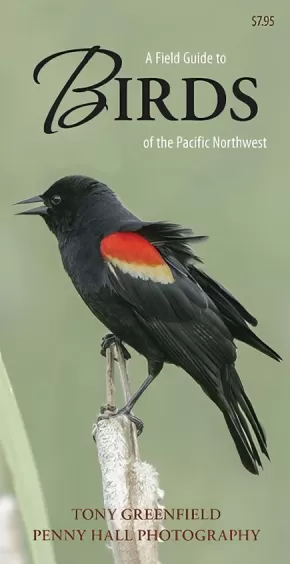Plants and Animals
Synopsis:
“We are all visitors to this land, our land has so much to offer, our land is overflowing with the medicines our bodies need, but we are only passing through. With respect, our purpose is to watch, to learn, to grow, to love, to teach. Then we will return home.” – Caroline Sanoffsky
Muskgege is a written record of traditional knowledge, passed down through the generations. It features descriptions and illustrations of 36 wild plants that can be used to make medicines. It is a beautiful and compelling reminder of the important role nature plays in First Nations culture.
Educator Information
Grades 6 and under.
Synopsis:
With over forty years since its original printing, and over 30,000 copies sold, this bestselling guide still remains a trusted and much-consulted reference for those interested in identifying, foraging and growing wild plants for food and medicine. Now Some Useful Wild Plants is back in print for a new generation of foragers and herbalists.
Some Useful Wild Plants contains sections on useful herbs, trees, berries and seaweeds, as well as commentary on avoiding poisonous species. Pick the young tender leaves of orach, salsify and miner's lettuce for a delicious and vitamin-rich spring salad or stir-fry. Concoct a cherry bark and licorice fern syrup to soothe a sore throat. Repel insects naturally using sage oil or vanilla leaf. From alder to yarrow, each featured plant has useful descriptors for identification and details on how to harvest, as well as how the plant is traditionally used for medicine by First Nations, pioneers and contemporary herbalists. Clear line drawings are provided to assist foragers in accurate identification. Directions are included for the preparation of ointments, salves, poultices, compresses and tinctures.
Dan Jason also addresses sustainability when foraging to ensure that harvesting supports the continuous growth of the plant and the natural environment.
Reviews
Great for both foragers and growers, the book draws from many sources, including the rich traditions of First Nations healers and Doukhobor wildcrafters, to identify the properties and uses of a wide range of plant life.... For those who feel skeptical about corporate farming and modern society’s mediated relationship with nature, this guide is a breath of fresh air. — Publishers Weekly
Occasional black-and-white illustrations enhance this venerable and practical guide sustainable foraging. From edible wild plants, to natural remedies for common ailments, to poisonous plants that should be meticulously avoided, Some Useful Wild Plants is reader-friendly, practical-minded, and highly recommended. — Midwest Book Review
Additional Information
186 pages | 5.00" x 7.00" | Line drawings | Revised edition
Synopsis:
Fertilize your garden naturally--a guide to growing your plants in healthy, happy soil
People want to know where their food comes from, who grows it and how it is grown. Interest in permaculture, backyard composting, and gardening in general, is growing. So how does the budding gardener ensure that his soil is healthy and nutrient-rich enough to support all the produce he intends to grow? Here's a hint--think worms! Vermiculture is the healthiest and most cost-effective way to ensure that your soil receives the nourishment that it needs. A simple vermicompost bin can produce the completely natural , nutrient-rich fertilizer that can be used to boost soil health and, in turn, increase your crop yield.
In true Crystal Stevens' fashion, Worms at Work is a practical, easy-to-implement guide to fertilizing your garden naturally. It discusses the vital role worms play in boosting soil health, and the reasons why every gardener should use vermicompost in order to decrease reliance on toxic synthetic fertilizers. Coverage includes:
- Simple designs to build your own vermicompost bin
- Caring for your worms
- Garden applications for your worm castings
- Lesson plans to incorporate vermicomposting into the school science curriculum
- Whether you're tending to a small backyard garden or managing a large farm, Worms at Work can show you how to start vermicomposting today in order to grow healthy plants in healthy, happy soil.
Educator & Series Information
Useful for incorporating vermicomposting into the school science curriculum and school gardens.
This book is part of the Homegrown City Life Series:
You’d like to be self-sufficient, but the space you have available is tighter than your budget. If this sounds familiar, the Homegrown City Life series was created just for you! Authors of this series will help you navigate the wide world of homesteading, regardless of how big (or small!) your space and budget may be. Topics range from cheesemaking to gardening and composting—everything the budding urban homesteader needs to succeed!
Increase your self-reliance
- Take back DIY skills
- Work with the space you have, apartment balcony or suburban backyard
- Learn about fermenting, crafting, growing, preserving, and other skills for the urban homesteader.
Additional Information
224 pages | 7.50" x 9.00"
Synopsis:
Nanuq: Life with Polar Bears features gorgeous wildlife photography of polar bears alongside firsthand accounts of experiences of living alongside the great sea bear. From close encounters with angry bears to the beauty of watching a polar bear climb an iceberg with its claws and traditional mythology surrounding life with polar bears, this book gives readers outside the Arctic a firsthand look at what life with polar bears is really like.
Synopsis:
With the rise of urban living and the digital age, many North American healers are recognizing that traditional medicinal knowledge must be recorded before being lost with its elders. A Cree Healer and His Medicine Bundle is a historic document, including nearly 200 color photos and maps, in that it is the first in which a native healer has agreed to open his medicine bundle to share in writing his repertoire of herbal medicines and where they are found. Providing information on and photos of medicinal plants and where to harvest them, anthropologist David E. Young and botanist Robert D. Rogers chronicle the life, beliefs, and healing practices of Medicine Man Russell Willier in his native Alberta, Canada. Despite being criticized for sharing his knowledge, Willier later found support in other healers as they began to realize the danger that much of their traditional practices could die out with them.
With Young and Rogers, Willier offers his practices here for future generations. At once a study and a guide, A Cree Healer and His Medicine Bundle touches on how indigenous healing practices can be used to complement mainstream medicine, improve the treatment of chronic diseases, and lower the cost of healthcare. The authors discuss how mining, agriculture, and forestry are threatening the continued existence of valuable wild medicinal plants and the role of alternative healers in a modern health care system. Sure to be of interest to ethnobotanists, medicine hunters, naturopaths, complementary and alternative health practitioners, ethnologists, anthropologists, and academics, this book will also find an audience with those interested in indigenous cultures and traditions.
Additional Information
240 pages | 6.00" x 8.99"
Synopsis:
The waters of the Pacific Northwest are home to some of the most unique and diverse marine creatures in the world, including rockfishes, greenlings and, of course, salmon. This full-colour brochure is packed with information on seventy-eight "must-have" common fishes of the Pacific Northwest. A Field Guide to Common Fish of the Pacific Northwest provides a succinct rundown on a huge variety of our fishy neighbours, and is an ideal guide for fishermen, divers and anyone interested in the marine life that fills our surrounding waters.
Synopsis:
A Field Guide to Foraging for Wild Greens and Flowers pinpoints easy-to-find greens and flowers that many don't realize are edible--such as dandelion, clover, chicory, sheep's sorrel and lamb's quarters--and also introduces readers to the delicious leaves of such native plants as goldenrod and fireweed. And readers can also eat their way to conservation by enjoying edible invasive plants in salads, like garlic mustard and fennel. A lightweight pamphlet that will easily fit into a purse or back pocket, this laminated guide will turn every walk from the bus stop, backyard ramble or stroll around the neighbourhood into a fun foraging expedition.
Additional Information
2 pages | 4.60" x 8.80"
Synopsis:
Rich in nutrients, used in products from cosmetics to explosives to fertilizers, and vital to our coastal marine ecosystems, seaweeds can be found on any rocky shore or beach in the Pacific Northwest. The pocket-sized Field Guide to Seaweeds of the Pacifc Northwest is packed with full-colour photos and information on a select variety of the most important and interesting seaweeds commonly encountered on the West Coast. Whether you want to identify seaweeds, better understand their role in the ocean, forage for food, collect for art or you're just plain curious as you poke around the seashore, this educational guide is your ultimate source for casual phycological fun.
Synopsis:
Would you be surprised if you came face to face with a Drumming Katydid, Red-eared Slider or Brown Bullhead? Would you know what to do if Dalmatian Toadflax or Giant Hogweed landed in your neighbourhood? Alex Van Tol can help. In Aliens Among Us, she identifies more than 50 species of animals and plants that have invaded British Columbia. With the help of colour photographs and illustrations, she exposes the invaders, explains how they got here and what they’re doing to the environment.
In this first-ever children’s book published by the Royal BC Museum, Van Tol has harvested the knowledge of museum biologists to alert the next generation of responsible environmentalists. Her list of serious invaders includes the colourfully named Purple Loosestrife, Violet Tunicate, Eastern Grey Squirrel and Yellow Perch, species that tend to take over an area and crowd out or destroy native species. She names the creatures that can eat their way through an ecosystem, like Smallmouth Bass, Gypsy Moths and American Bullfrogs, as well as vandals like Norway Rats and European Starlings that cause damage to property. And she points out the species that might do serious harm to humans and other animals, such Rockpool Mosquitoes, Giant Hogweed and Poison Hemlock. Some aliens, like European Wall Lizards and Giant Garden Slugs, haven’t yet posed problems in BC, at least not that we’re aware of – but they still need to be watched. And finally, Van Tol raises the alert on species that haven’t yet arrived but may be coming soon, like Northern Snakeheads, Fence Lizards and Zebra Mussels. This readable and alarmingly informative book will help young people prepare for the invasion, and arm them with the tools to stop the spread of unwanted aliens in British Columbia.
Reviews
"Chapters include examples within every class of animal and a selection of herbaceous and woody plants found in BC. One chapter discusses three animals (e.g. zebra mussel) not yet in the province, but likely to appear soon. Another chapter looks at native species (e.g. northern raccoon) that can dominate enough to upset ecology. Finally, the author offers a few examples of aliens that have become so familiar (e.g. cattle) that we forget they are not native here. An important feature is the section “You Can Help” which outlines ways to stop the spread of aliens and urges the reporting of sightings. There’s a Glossary of terms, several pages of scientific names and a useful list of sources, both print and web. The book is packed with concise, intriguing details gathered by the BC author, a former teacher who loves to research. It is published by the Royal BC Museum which attests to its relevancy and accuracy." - CM Magazine, 2016
Additional Information
128 pages | 7.50" x 9.00"
Synopsis:
As a botanist, Robin Wall Kimmerer has been trained to ask questions of nature with the tools of science. As a member of the Citizen Potawatomi Nation, she embraces the notion that plants and animals are our oldest teachers. In Braiding Sweetgrass, Kimmerer brings these two lenses of knowledge together to take us on “a journey that is every bit as mythic as it is scientific, as sacred as it is historical, as clever as it is wise” (Elizabeth Gilbert).
Drawing on her life as an indigenous scientist, and as a woman, Kimmerer shows how other living beings—asters and goldenrod, strawberries and squash, salamanders, algae, and sweetgrass—offer us gifts and lessons, even if we've forgotten how to hear their voices. In reflections that range from the creation of Turtle Island to the forces that threaten its flourishing today, she circles toward a central argument: that the awakening of ecological consciousness requires the acknowledgment and celebration of our reciprocal relationship with the rest of the living world. For only when we can hear the languages of other beings will we be capable of understanding the generosity of the earth, and learn to give our own gifts in return.
Reviews
“Robin Wall Kimmerer has written an extraordinary book, showing how the factual, objective approach of science can be enriched by the ancient knowledge of the indigenous people. It is the way she captures beauty that I love the most—the images of giant cedars and wild strawberries, a forest in the rain and a meadow of fragrant sweetgrass will stay with you long after you read the last page.”— Jane Goodall
"I give daily thanks for Robin Wall Kimmerer for being a font of endless knowledge, both mental and spiritual."— Richard Powers,New York Times
"In a world where only six percent of mammalian biomass on the planet now comprises of wild animals, I longed for books that pressed me up against the inhuman, that connected me to an inhuman world. Braiding Sweetgrass by Robin Wall Kimmerer moved me to actual tears."— Alexandra Kleeman, The Millions
"In Braiding Sweetgrass, botanist Robin Wall Kimmerer tackles everything from sustainable agriculture to pond scum as a reflection of her Potawatomi heritage, which carries a stewardship 'which could not be taken by history: the knowing that we belonged to the land.' . . . It's a book absorbed with the unfolding of the world to observant eyes—that sense of discovery that draws us in."— NPR
“With deep compassion and graceful prose, Robin Wall Kimmerer encourages readers to consider the ways that our lives and language weave through the natural world. A mesmerizing storyteller, she shares legends from her Potawatomi ancestors to illustrate the culture of gratitude in which we all should live.”—Publishers Weekly
“The gift of Robin Wall Kimmerer’s book is that she provides readers the ability to see a very common world in uncommon ways, or, rather, in ways that have been commonly held but have recently been largely discarded. She puts forth the notion that we ought to be interacting in such a way that the land should be thankful for the people.”—Minneapolis Star Tribune
“Braiding Sweetgrass is instructive poetry. Robin Wall Kimmerer has put the spiritual relationship that Chief Seattle called the ‘web of life’ into writing. Industrial societies lack the understanding of the interrelationships that bind all living things—this book fills that void. I encourage one and all to read these instructions.”— Oren Lyons, Faithkeeper, Onondaga Nation and Indigenous Environmental Leader
Additional Information
|
Synopsis:
Mary Siisip Geniusz has spent more than thirty years working with, living with, and using the Anishinaabe teachings, recipes, and botanical information she shares in Plants Have So Much to Give Us, All We Have to Do Is Ask. Geniusz gained much of the knowledge she writes about from her years as an oshkaabewis, a traditionally trained apprentice, and as friend to the late Keewaydinoquay, an Anishinaabe medicine woman from the Leelanau Peninsula in Michigan and a scholar, teacher, and practitioner in the field of native ethnobotany. Keewaydinoquay published little in her lifetime, yet Geniusz has carried on her legacy by making this body of knowledge accessible to a broader audience.
Geniusz teaches the ways she was taught—through stories. Sharing the traditional stories she learned at Keewaydinoquay’s side as well as stories from other American Indian traditions and her own experiences, Geniusz brings the plants to life with narratives that explain their uses, meaning, and history. Stories such as “Naanabozho and the Squeaky-Voice Plant” place the plants in cultural context and illustrate the belief in plants as cognizant beings. Covering a wide range of plants, from conifers to cattails to medicinal uses of yarrow, mullein, and dandelion, she explains how we can work with those beings to create food, simple medicines, and practical botanical tools.
Plants Have So Much to Give Us, All We Have to Do Is Ask makes this botanical information useful to native and nonnative healers and educators and places it in the context of the Anishinaabe culture that developed the knowledge and practice.
Additional Information
344 pages | 7.00" x 10.00" | Paperback
Synopsis:
If wild berry foragers followed vague advice such as "berries of red and you'll soon be dead" or "berries of blue will do harm to you" imagine how many of nature's delicacies would be passed by! On the other hand, for anyone who has thought twice before popping that delicious-looking morsel into their mouth, the reality of poisonous berries growing in the wild is reason enough to be berry aware.
With a basketful of information presented on a two-sided, lightweight and pocket-sized pamphlet, A Field Guide to Edible Fruits and Berries of the Pacific Northwest is the perfect resource for wild fruit- and berry-lovers of all ages, whether on a short walk in the woods or a backcountry hiking trip. In addition to more commonly identified specimens such as strawberries, blueberries and blackberries, explore the delicious possibilities of evergreen huckleberries, cloudberries and crowberries, and learn how to tell the edible lingonberry from the poisonous baneberry.
Each entry is illustrated with a colour photograph and accompanied by a brief description and seasonal availability to help identify more than forty kinds of fruits and berries found in the wild, along with information on how best to prepare and preserve the edible ones.
Additional Information
2 pages | 37.00" x 9.00" | field guide with 50 colour photographs
Synopsis:
Explore the fascinating world of Nunavut's diverse bird populations in this richly visual, informative book.
Through beautiful photographs and a broad range of information, readers will learn about the appearances, traditional uses, and behaviours of Arctic birds. With detailed information on more than 50 species, this book provides an in-depth look at Arctic birds.
Far from a barren land of ice and snow, this book will introduce readers to the vibrant natural life of Nunavut through its distinct ornithology.
Educator Information
While mainly a book about birds in Nunavut for young adults (pre-teens or teens) and adults, this resource also contains cultural information about the Inuit, including the Inuit's relationship to Nunavut birds, such as the value and uses of these birds, the Inuktitut names for birds, as well as local ecological knowledge.
This resource is also available in French: Les oiseaux du Nunavut
Additional Information
174 pages | 9.00" x 6.50"
Synopsis:
Ian McAllister, conservationist, photographer, and longtime Great Bear Rainforest resident, takes us on a deeply personal journey from the headwaters of the region’s unexplored river valleys down to the hidden depths of the offshore world. Globally renowned for its astonishing biodiversity, the Great Bear Rainforest is also one of the most endangered landscapes on the planet, where First Nations people fight for their way of life as massive energy projects threaten entire ecosystems.
In a not-so unusual day, McAllister quietly observes 27 bears fishing for salmon, three of which are the famed pure white spirit bear. This stunning collection of photographs and personal narrative is the product of twenty-five years of McAllister’s research, exploration, and campaigning for the spectacular area he calls home.
Synopsis:
Do you know a tanager from a towhee? A goatsucker from a grosbeak? Here, after much demand, is a waterproof, portable 8-fold guide featuring 112 photos of the common birds found in coastal areas of Oregon, Washington, British Columbia and Alaska. Each species is labelled with common name, size, distribution range and favoured habitat. This full-colour pamphlet is useful to anyone who has an interest in taking up birdwatching, or just wants to figure out what's flitting about the birdfeeder.
Additional Information
2 pages | 37.00" x 9.00" | field guide with 112 colour photographs

